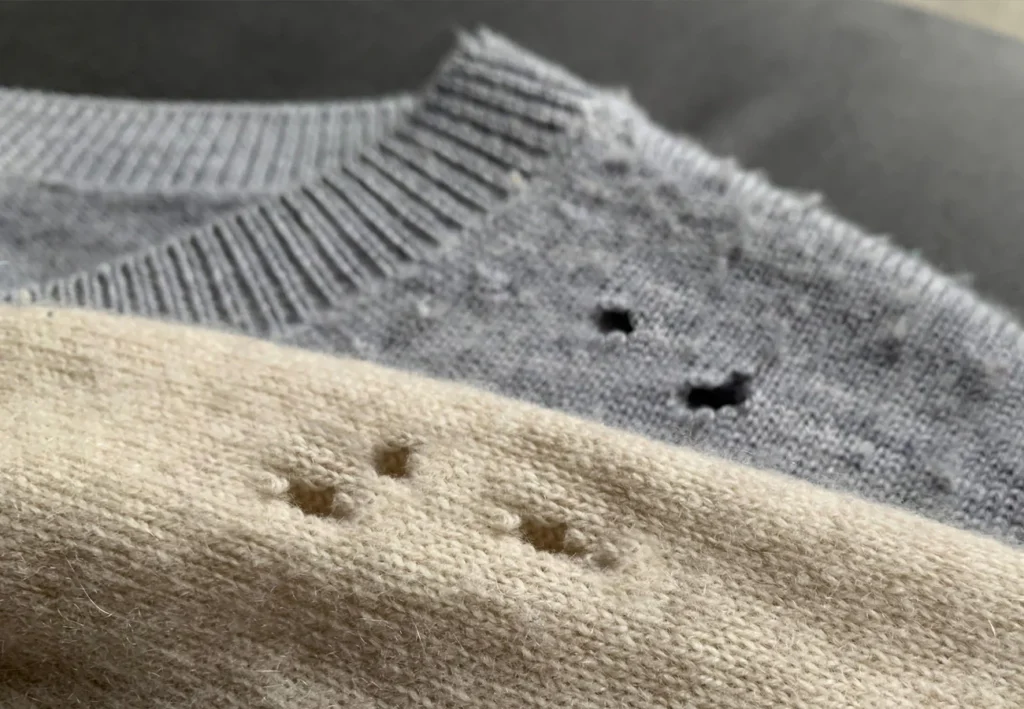A well-tailored suit is more than just a piece of clothing; it’s an investment in style, professionalism, and confidence. Unfortunately, suits made from natural fibers like wool, cashmere, or silk are prime targets for moths. The discovery of a moth hole in your suit can feel devastating, but it doesn’t have to mean the end of its wearability. With the right techniques and preventative measures, you can restore your suit and protect it from future damage.
In this comprehensive guide, we’ll explore how to deal with moth holes in suits, from repair options to prevention strategies, ensuring your wardrobe remains intact and pristine.
Why Do Moths Target Suits?
Moths, particularly their larvae, are attracted to natural fibers found in suits. The keratin in wool, cashmere, and silk serves as a food source for the larvae. Moths are drawn to garments that are stored in dark, undisturbed spaces and may contain traces of dirt, sweat, or food particles.
Identifying moth damage early is critical. Look for small, clean holes and inspect nearby areas for larvae or eggs. If you notice damage, act quickly to repair your suit and prevent further infestation.
Assessing Moth Hole Damage
Before repairing your suit, it’s important to assess the extent of the damage. Here are some factors to consider:
Size of the Hole: Small holes can often be repaired invisibly, while larger holes may require patching or professional reweaving.
Location: Damage in visible areas, such as the front or lapel, requires a more seamless repair, whereas holes in less conspicuous areas may allow for simpler fixes.
Fabric Type: Suits made from delicate or expensive fabrics may require specialized techniques or professional repair services.
Repairing Moth Holes in Suits
1. Invisible Mending
Invisible mending is the most effective method for repairing moth holes in suits. This technique involves reweaving threads into the damaged area to restore the original fabric’s appearance.
Steps:
Identify threads from inconspicuous areas of the suit, such as inside seams, to use for the repair.
Using a fine needle, weave the threads into the hole, replicating the original fabric’s weave pattern.
Secure the edges to prevent further damage.
This method requires exceptional skill and is often performed by professional tailors or fabric restoration specialists. The result is a repair that is virtually undetectable.
2. Darning
Darning is a more accessible method for repairing small moth holes. This technique involves stitching over the hole to reinforce the fabric.
Steps:
Place a darning mushroom or similar firm surface under the hole.
Thread a needle with a color-matched thread.
Stitch across the hole in a crisscross pattern, covering the damaged area.
Secure the stitches and trim excess thread.
While not as seamless as invisible mending, darning can effectively restore the functionality of the suit and prevent the hole from expanding.
3. Patching
For larger holes or extensive damage, patching may be the best option. This method involves applying a fabric patch over the hole.
Steps:
Find a fabric patch that matches your suit in color and texture.
Cut the patch slightly larger than the hole.
Use fabric glue or fine stitching to attach the patch to the suit.
Press the patched area to ensure it lies flat.
While patching is more noticeable than other methods, it is a durable solution for heavily damaged areas.
4. Professional Reweaving Services
For high-end suits or garments with sentimental value, consider investing in professional reweaving services. Skilled craftsmen use advanced techniques to repair moth holes invisibly, ensuring the suit looks as good as new.
Preventing Moth Holes in Suits
Prevention is key to protecting your suits from moth damage. Here are some practical steps to safeguard your wardrobe:
1. Proper Cleaning and Storage
Clean Suits Before Storage: Moths are attracted to dirt and sweat, so always dry clean your suits before storing them.
Use Airtight Storage: Store suits in breathable garment bags or airtight containers to keep moths out.
Avoid Overcrowding: Give your suits room to breathe by spacing them out in your closet.
2. Natural Moth Deterrents
Cedar: Place cedar blocks or hangers in your closet. The natural oils in cedar repel moths and add a pleasant scent.
Lavender: Use lavender sachets to deter moths naturally.
Clove and Rosemary: These herbs can also be used to repel moths when placed in sachets or scattered in storage areas.
3. Regular Inspections
Inspect your suits periodically for signs of moth damage, such as holes, larvae, or eggs.
Shake out and air your suits to disrupt any moth activity.
4. Closet Maintenance
Vacuum your closet regularly to remove moth eggs and larvae.
Keep the space clean and dry, as moths thrive in humid conditions.
5. Use Moth Traps
Set up pheromone traps in your closet to capture adult moths and prevent them from laying eggs.
When to Seek Professional Help
While small moth holes can often be repaired at home, some situations call for professional assistance:
Extensive Damage: If your suit has multiple holes or large tears, a professional tailor or reweaving service can provide the best results.
Valuable or Sentimental Pieces: For high-end suits or items with sentimental value, invest in professional repairs to ensure a seamless finish.
Time Constraints: If you lack the time or tools to perform the repair yourself, a professional can handle the job efficiently.
Sustainability and Moth Hole Repair
Repairing moth holes in suits aligns with sustainable fashion principles. Instead of discarding a damaged suit and contributing to textile waste, repairing and maintaining your garments extends their lifespan and reduces environmental impact. By choosing to repair rather than replace, you’re making a conscious decision to support a more sustainable and eco-friendly wardrobe.
Conclusion
Discovering a moth hole in your suit can be frustrating, but it’s not the end of the road for your garment. With the right repair techniques, such as invisible mending, darning, or patching, you can restore your suit and continue wearing it with confidence. By taking preventative measures, such as proper cleaning, storage, and the use of natural repellents, you can protect your suits from future damage.
For high-value or sentimental pieces, consider investing in professional repair services to ensure the best possible outcome. Repairing moth-damaged suits not only preserves your wardrobe but also supports a sustainable approach to fashion. The next time you encounter a moth hole in your suit, remember that restoration is always an option, and your garment can be brought back to life with care and expertise.



